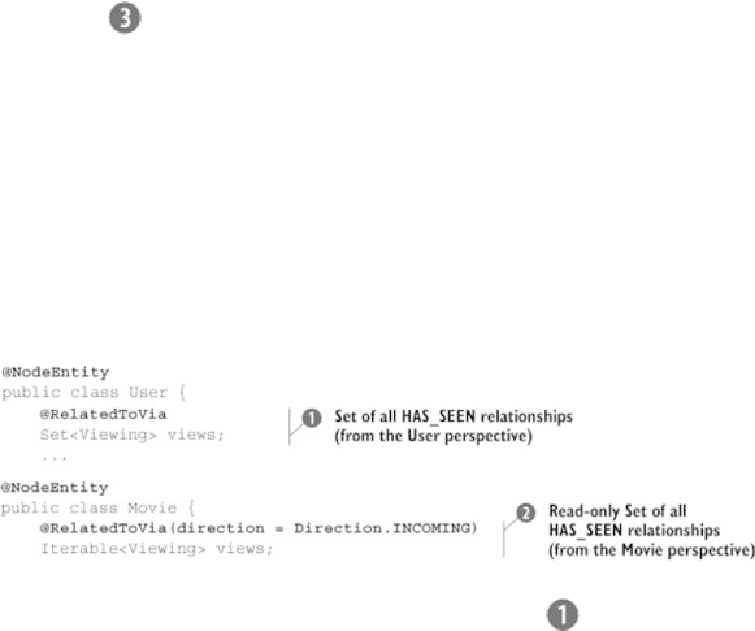Database Reference
In-Depth Information
If you'd like to access the node entities on either side of this relationship, you'll need
to provide a field for each of these and annotate them with
@StartNode
and
@EndNode
. For the
Viewing
class example, the
User
node entity starts (has the
outgoing) relationship to the ending
Movie
entity.
In terms of what's required to model a Neo4j relationship, that's it. There is, however, gen-
erally not much point in defining relationship entity classes in isolation. They're almost
always referred to through one or more fields on associated node entities. In
section 9.2.5
we'll go into detail about how node entities can refer to other node entities through simple
references, but also through POJO-modeled relationships. To provide the full context for
this example, the following listing provides a sneak preview of how the
User
node entity,
as well as the
Movie
node entity, refer to the
Viewing
relationship entity class through
their
views
field.
Listing 9.4.
User
and
Movie
node entity snippets
Within the
User
node entity, the
RelatedToVia
annotation on the
views
field
essentially reads as “all the
HAS_SEEN
relationships (with any associated properties)
between this user and any movies the user has watched.” (The
HAS_SEEN
relationship
type is inferred because that is what's defined in the
type
property on the annotation of
the
Viewing
class itself.) The
Viewing
class represents the full context of the relation-
ship between these two entities including the
rating
field. Note that in this case (unlike
the
Movie
classdetailednext)youdon'texplicitlyspecify
direction = Direction
.OUTGOING
within the annotation because this is the default.


